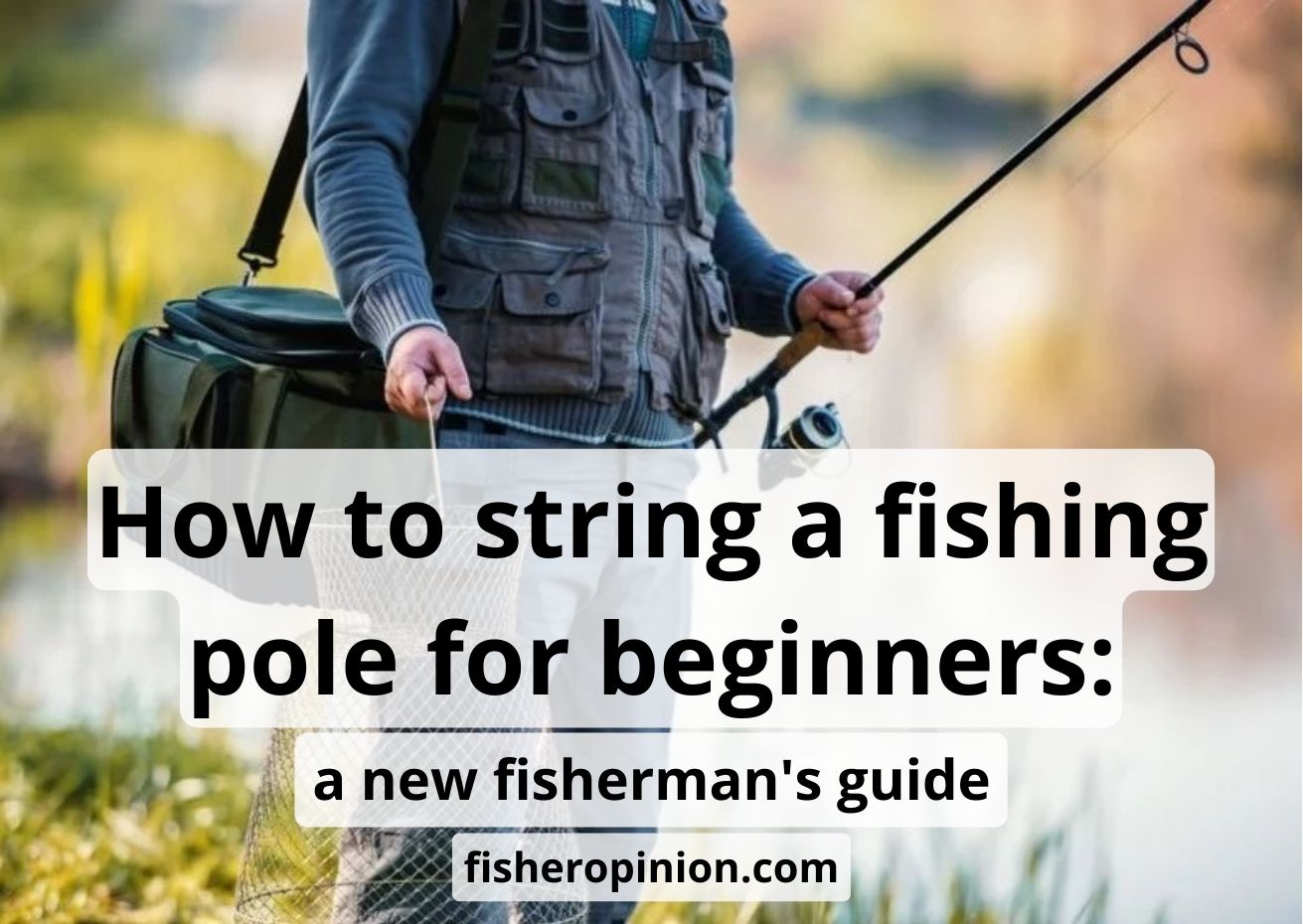How to string a fishing pole for beginners? Fishing is a timeless pastime that connects people with the serenity of the great outdoors, offering not only relaxation but also the thrill of the catch.
If you’re just starting on your fishing journey, one of the fundamental skills every angler should master is stringing a fishing rod. The process may seem intimidating, but fear not – we will walk you through the steps to string a fishing pole with confidence and precision.
In the world of fishing, the synergy between your fishing rod, fishing line, and fishing reel is paramount.
Understanding how to properly and quickly string a fishing pole ensures that you’re well-prepared for your first or next fishing trip, whether you’re targeting freshwater or saltwater species.
In this comprehensive article, we’ll equip you to embark on your next fishing adventure with the knowledge and skill needed to start fishing in the right way.
So, let’s immerse into the world of tackle, knots, and techniques as we explore how to string a fishing rod for beginners.
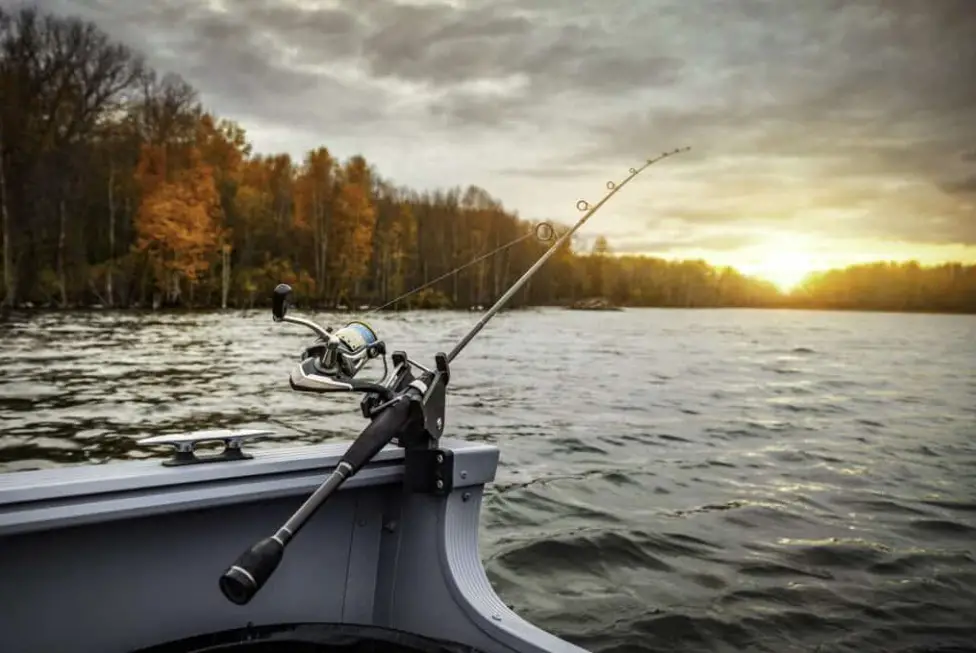
How to string a fishing rod: the beginner’s manual
To string a fishing pole may appear daunting at first, but with a clear understanding of the process and a few essential techniques, beginners can quickly master this fundamental skill.
Step 1. Gather your tools
Before you start to string a fishing pole, pick the materials and tools:
- Fishing rod: ensure your fishing rod is clean and in good condition.
- Fishing line: select the line for your intended catch and environment.
- Fishing reel: make sure your fishing reel is firmly attached to the rod.
- Scissors or line cutters: you’ll need these to get rid of excess line when you string a fishing rod.
- A comfortable workspace: find a clean, well-lit area to work in.
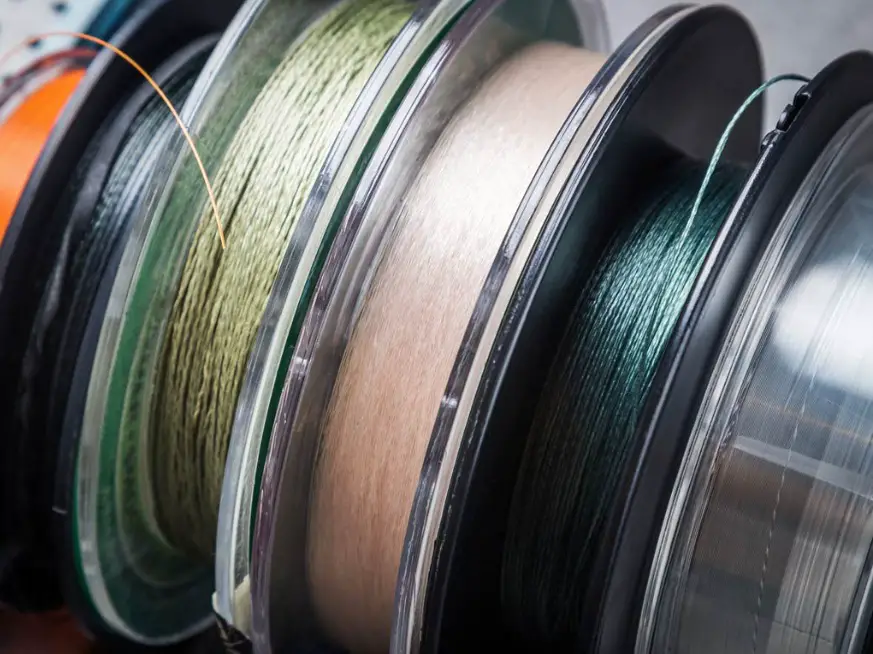
Step 2. Thread the line via the guides
Begin by passing your fishing line through the guides (also known as eyelets) on your fishing rod. The starting point should be at the guide closest to the fishing reel and work your way toward the tip of the rod.
Safeguard that the fishing line runs smoothly through each guide without forming unwanted tangles or twists (there are various types of fishing reels, but the procedure will be similar.)
Step 3. Fixate the fishing line on the reel spool
Once the line is threaded through all the guides, unlock the bail (the wire arm) on your spinning reel. Lead the line via the line spool, monitoring that it passes via the spool in the same direction the fishing line is wound.
This ensures that the line will come off the spool smoothly when you cast.
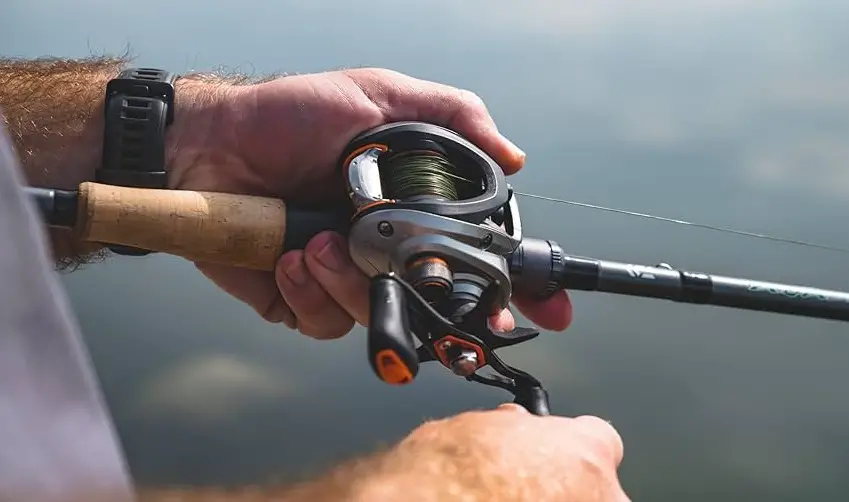
Step 4. Tie the Arbor knot
Fixing the fishing line to the spool can be achieved with an Arbor knot. It’s not complex:
- Use the tag end of the line to form an overhand knot.
- Guide the tag end through the loop made by the overhand knot.
- Wrap the tag end around the main line and the spool several times.
- Lead the tag end via the noose once more.
- Drizzle the knot with a bit of water and pull it tight.
And voilà, your Arbor knot is done.
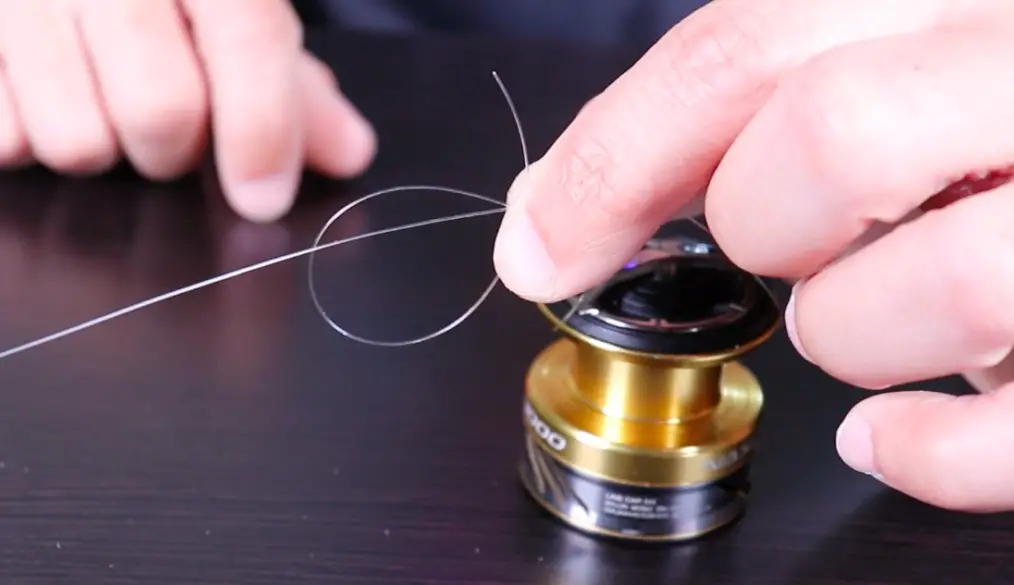
Step 5. Spool the line
With the line securely fixed to the line spool, begin spooling it onto the reel.
Check that the line winds evenly and neatly onto the spool.
Maintaining proper tension while spooling is crucial to avoid line tangling and twisting.
Step 6. Fill the reel
Continue winding the line onto the reel until it’s nearly full, leaving a small gap at the edge of the spool to prevent overfilling.
Be mindful not to overfill the reel, as this can lead to casting issues.
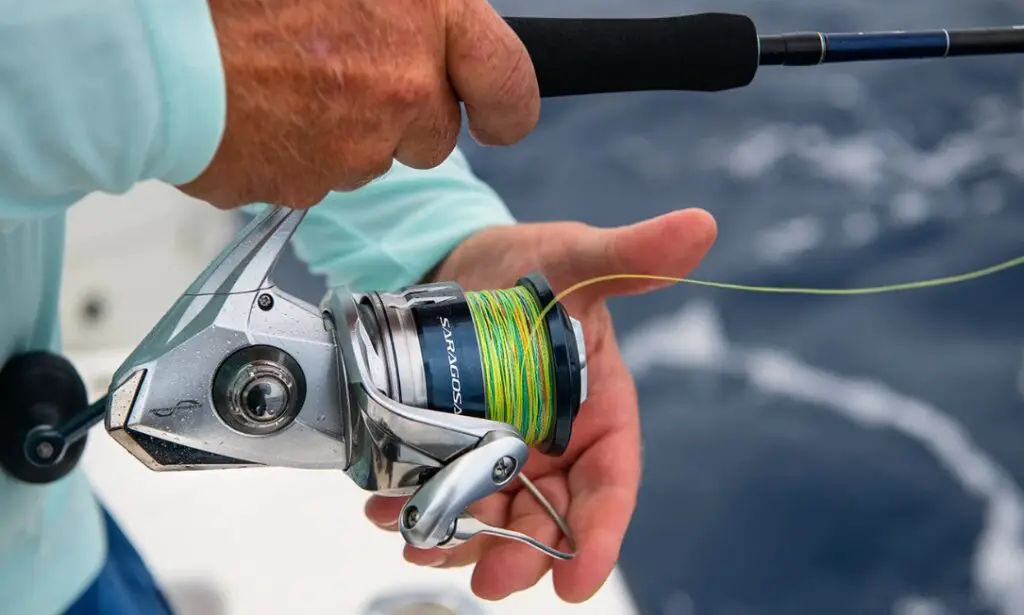
Step 7. Close the bail and test the line
Once the line is spooled onto the spinning reel, close the bail (the wire arm) to secure the line.
Hold the line tight between your index finger and thumb and give it a gentle pull to ensure it’s properly seated on the spool and won’t slip.
Sever any excess line, leaving about a foot or two for attaching lures or hooks.
Congratulations! With your fishing line expertly spooled onto the spinning reel, you’re now ready to start fishing.
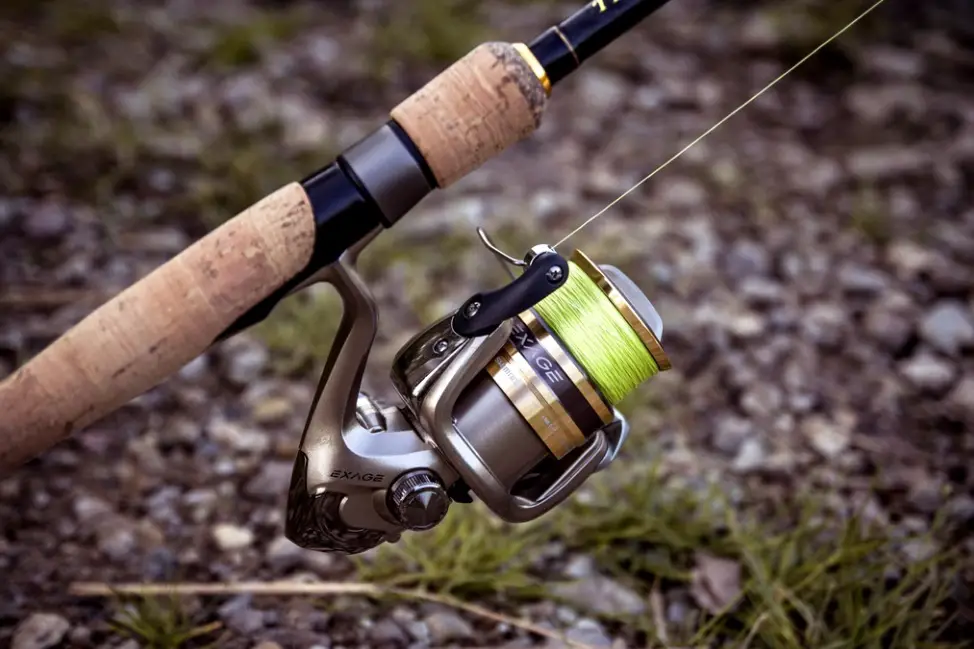
The perfect rod
Finding the right fishing rod is a critical first step for any angler, especially beginners.
With a multitude of options available, it’s essential to understand the key factors that influence your decision. In this section, we will guide you through the process of selecting the perfect fishing rod for your needs.
1. Specify your fishing style
The first consideration when selecting fishing rods is your preferred fishing style. Different fishing techniques require specific types of rods. Below, you’ll find the most common ones.
- Spinning rods: ideal for beginners, these versatile rods are suitable for a wide range of fishing styles and are easy to use.
- Casting rods: designed for more experienced anglers, these rods excel in precision casting and are often used for targeting larger species.
- Fly rods: perfect for fly-fishing, a fly rod (with a fly line and a fly reel) is specialized for delicate presentations of artificial flies to catch trout, salmon, and other freshwater species.
- Surf rods: these longer, powerful rods are designed for surf fishing and casting bait or lure into the waves.
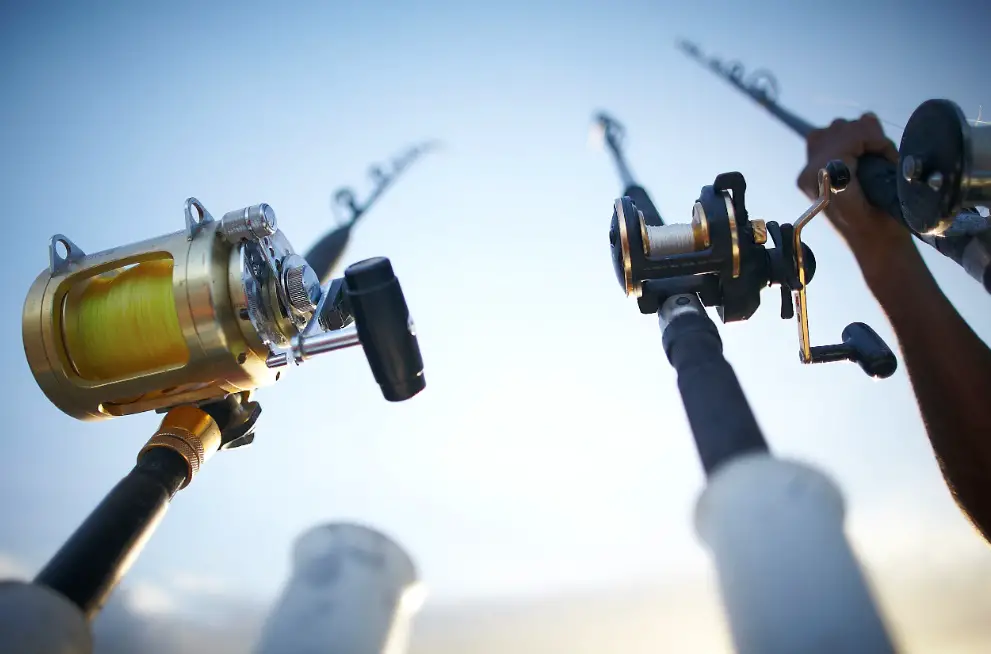
2. Consider the fishing environment
Where you plan to fish plays a significant role in your right fishing pole selection.
Different environments, such as freshwater lakes, rivers, or saltwater coasts, require specific rod materials and lengths. For instance:
- Freshwater rods: generally shorter and more lightweight, these rods are suitable for freshwater species like bass, trout, and panfish.
- Saltwater rods: saltwater rods are built to withstand the corrosive effects of saltwater and are designed for larger, more powerful fish such as marlin, tuna, and tarpon.
3. Rod length and action
The length and action of your rod are crucial for casting distance and hook-setting power:
- Rod length: longer rods typically cast farther, making them suitable for open waters, while shorter rods are more maneuverable in tight spaces.
- Rod action: rods can have fast, medium, or slow actions. Fast-action rods bend mainly near the tip, providing a quick hook set. Slow-action rods bend throughout the length, making them suitable for handling lighter fish.
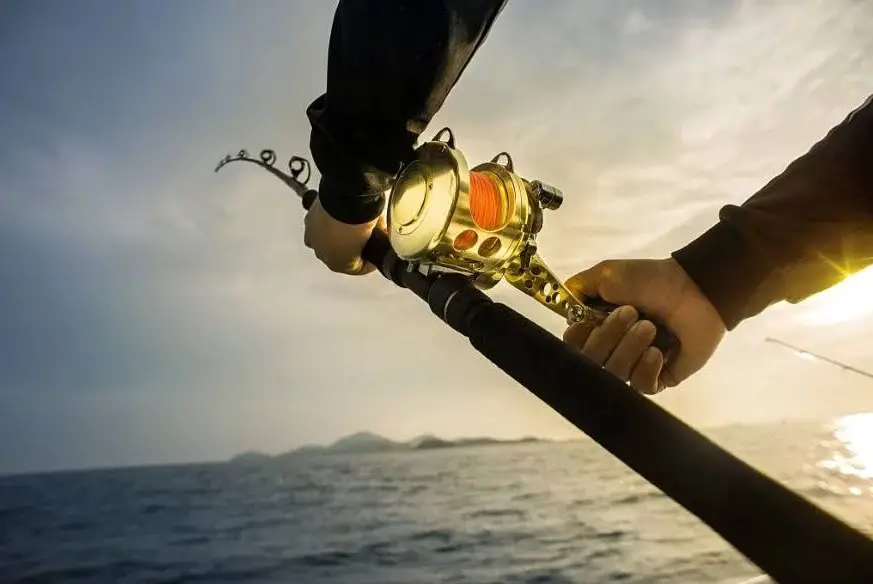
4. Material matters
Fishing rods are constructed from various materials, each offering distinct advantages:
- Fiberglass: affordable and durable, fiberglass rods are great for beginners and are less prone to breaking.
- Graphite/carbon fiber: lightweight and sensitive, graphite rods are favored by experienced anglers for their responsiveness and strength.
- Composite: these rods blend fiberglass and graphite, offering a balance of durability and sensitivity.
Selecting the best fishing lines
One of the critical aspects to focus on before taking your first fishing trip is picking the perfect fishing line for your spinning rod.
Fishing lines come in various types.
Monofilament line: all-purpose and versatile
A monofilament line is one of the most commonly used and versatile options for anglers. It’s made from a single strand of synthetic material, usually nylon, and offers several advantages:
- Knot strength: monofilament lines have excellent knot strength, making them easy to tie secure knots with.
- Shock absorption: monofilament has a degree of stretch, which acts as a shock absorber during a fight with a fish. This stretch can prevent the line from breaking when a fish makes a sudden run.
- Buoyancy: it is buoyant, which can be advantageous when using certain lures or rigs that need to float.
- Versatility: it can be used in various fishing applications, including freshwater and saltwater fishing, as well as with a baitcasting and spinning reel.
However, monofilament lines do have some limitations.
They can be less sensitive compared to other lines, and their visibility in the water can affect your success in clear conditions.

Fluorocarbon line: invisible and sensitive
A fluorocarbon line is known for its near-invisibility underwater, making it an excellent choice for finesse fishing and situations where fish are easily spooked. Key characteristics of fluorocarbon lines include:
- Invisibility: fluorocarbon is nearly invisible underwater due to its refractive index, which closely matches that of water.
- Sensitivity: it has low stretch, which means you can feel even the slightest nibbles or changes in the bottom structure.
- Abrasion resistance: fluorocarbon is highly resistant to abrasion, making it suitable for fishing around rocks and other rough structures.
However, fluorocarbon lines tend to be stiffer and less manageable than monofilament, which can affect casting distance and handling.
Braided line: strength and durability
A braided line is composed of multiple strands of synthetic fibers woven together to create a strong and durable line.
Here are some of its key characteristics:
- Strength: braided lines are incredibly strong for their diameter, making them ideal for targeting larger fish or fishing in heavy cover where you need to exert more force. A bait casting reel (and sometimes a fly reel) is usually used for heavier lures because a bait casting reel is also stronger.
- Zero stretch: unlike the other types, these have virtually no stretch. This means you’ll have exceptional sensitivity and can transmit even the subtlest of bites directly to your rod tip.
- Small diameter: Braided lines have a smaller diameter compared to monofilament of the same strength class. This allows you to spool more line onto your spinning reel, increasing line capacity.
Despite their many advantages, braided lines do have some drawbacks.
They are highly visible in the water, which can be a disadvantage in clear conditions.
Additionally, the lack of stretch in a braided line can make the line tight and more prone to breaking if you’re not careful with your drag settings.

Line diameter is critical
The diameter of your line matters because it affects the line’s visibility underwater and its strength. Smaller diameter fishing poles and lines are less visible to fish and offer improved sensitivity. If you’re aiming for stealthy presentations, consider a thinner line, especially when using spinning reels in clear water conditions.
Knots and knot strength
Knots are the weak points in your line, so it’s crucial to choose the right knot for the job.
Popular knots like the improved clinch knot and the double uni knot are essential skills every angler should master.
Ensure that your knots are tied securely to prevent break-offs during the fight with a fish.
My personal favorite is an improved clinch knot, but maybe it’s because it took me a while to master it, and I was extremely proud when I did.

Line capacity
When spooling your reel, it’s essential to understand how much line to fill. Too much or too little line can affect casting distance and performance.
Many spinning reels have a line capacity indicator on the spool, so be sure to follow the manufacturer’s recommendations.
Direction matters
When spooling your reel, ensure that the line is wound onto the spool in the same direction as it’s coming off the filler spool.
Winding the fishing lines in opposite direction will inevitably result in line twists and tangling, which can be frustrating during your fishing endeavor.
Line maintenance
Proper care of your fishing line is essential for its longevity and performance. After each fishing trip, inspect your line for any nicks or abrasions.
Clean your line regularly with warm, soapy water to remove dirt and debris that can weaken it over time. It’s one of many valuable fishing tips I got from the seasoned anglers.
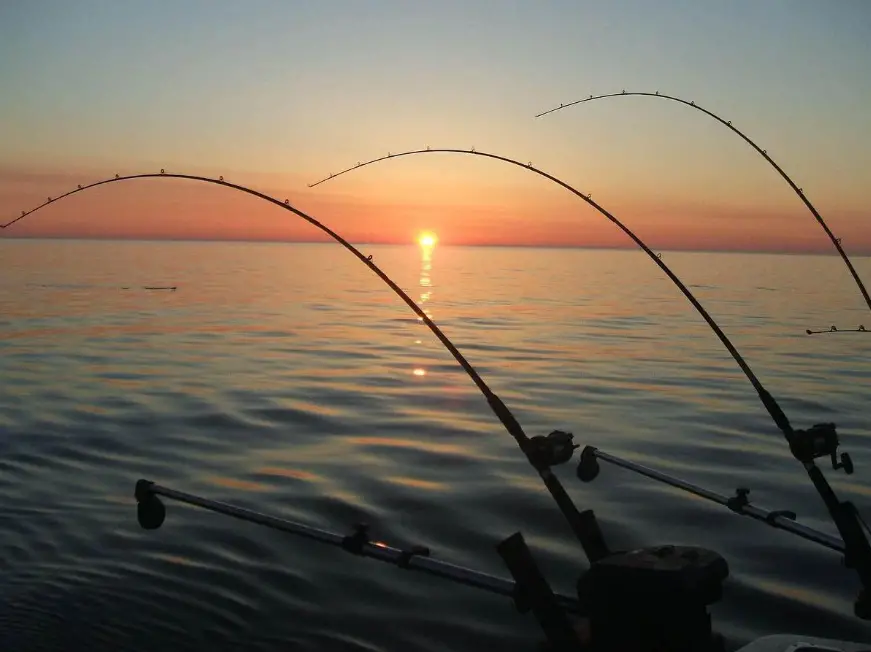
Final thoughts
As you embark on your journey into the world of fishing, you’ll discover that this timeless pastime offers not only the thrill of the catch but also a profound connection to nature and the opportunity for relaxation and reflection.
Opting for the right fishing poles as well as the right fishing line, mastering your skills to string a fishing rod perfectly, understanding the intricacies of a reel filling station, and the art of finding reel foot, all that complex knowledge should not scare you off.
Quite the opposite, the challenge of fly reels, fly line, and reel foot should motivate you for great achievements in the new and empowering fishing adventures.
Embark on that exciting journey and never look back. Happy fishing!
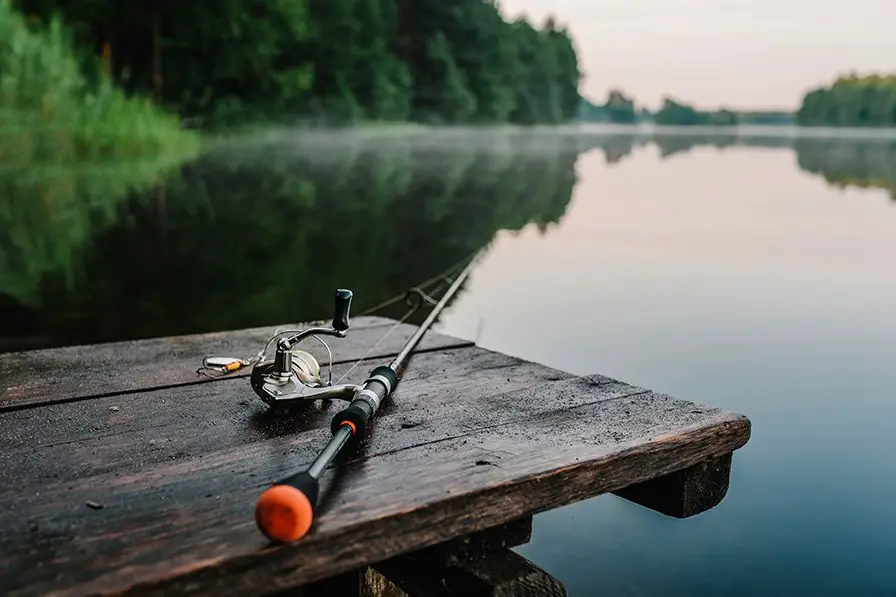
FAQ
How do you set up a fishing line for beginners?
To set up a fishing line for beginners, first, lead the line via the rod’s guides, follow by attaching it to the reel spool with an Arbor knot, and then spool the line evenly. Close the bail, and you’re ready to fish.
How do you tie a string on a fishing pole?
To tie a string (fishing line) to a fishing pole, use a proper knot like the improved clinch knot. Lead the line through the guide, make a noose, and encircle the tag end around the standing line. Guide the tag end via the noose and tighten the knot.
How do you set up a fishing pole for dummies?
Setting up a fishing pole for beginners is simple.
Thread the line through the guides, then fix it to the reel spool with an arbor knot (the reel seat will help secure the line), and spool it evenly. Close the bail, and you’re ready to fish.
What is the best way to put line on a fishing pole?
How to string a fishing pole for beginners? The best way to string a fishing pole is to start by threading it through the guides, then secure it to the reel spool with an appropriate knot like the arbor knot (open the reel seat and secure the line).
Make sure to evenly spool the line so it doesn’t twist or tangle as you wind it onto the reel. Close the bail, and you’re set to go fishing.
How are fly reels different from regular fishing reels?
A fly reel is substantially sleeker. Also, they are less complex in their construction than regular fishing reels. Fly reels consist of a cylinder positioned between two disks. The line is wrapped around that cylinder, and there is also a small knob serving as a handle.

